Related Research Articles

Leslie Townes "Bob" Hope was a British-born American comedian, actor, entertainer and producer with a career that spanned nearly 80 years and achievements in vaudeville, network radio, television, and USO Tours. He appeared in more than 70 short and feature films, starring in 54. These included a series of seven Road to ... musical comedy films with Bing Crosby as his partner.

The Andrews Sisters were an American close harmony singing group of the swing and boogie-woogie eras. The group consisted of three sisters: contralto LaVerne Sophia Andrews (1911–1967), soprano Maxene Anglyn Andrews (1916–1995), and mezzo-soprano Patricia Marie Andrews (1918–2013). The sisters have sold an estimated 80 million records. Their 1941 hit "Boogie Woogie Bugle Boy" can be considered an early example of jump blues. Other songs closely associated with the Andrews Sisters include their first major hit, "Bei Mir Bist Du Schön " (1937), "Beer Barrel Polka " (1939), "Beat Me Daddy, Eight to the Bar" (1940), "Don't Sit Under the Apple Tree " (1942), and "Rum and Coca-Cola" (1945), which helped introduce American audiences to calypso.
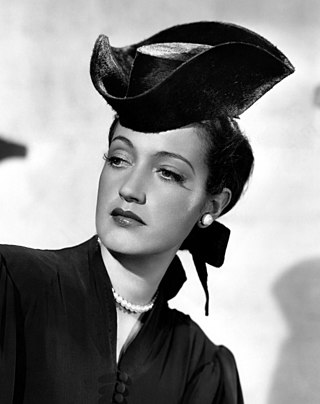
Dorothy Lamour was an American actress and singer. She is best remembered for having appeared in the Road to... movies, a series of successful comedies starring Bing Crosby and Bob Hope.

Broadway Open House is network television's first late-night comedy-variety series. It was telecast live on NBC from May 29, 1950, to August 24, 1951, airing weeknights from 11pm to midnight. One of the pioneering TV creations of NBC president Pat Weaver, it demonstrated the potential for late-night programming and led to the later development of The Tonight Show.
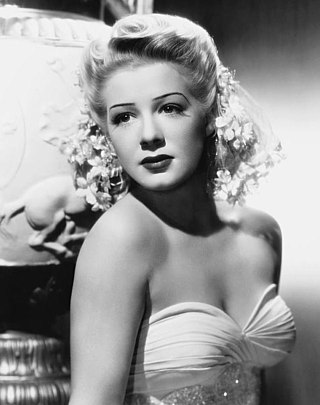
Betty Hutton was an American stage, film, and television actress, comedian, dancer, and singer. She rose to fame in the 1940s as a contract player for Paramount Pictures, appearing primarily in musicals and became one of the studio's most valuable stars. She was noted for her energetic performance style.
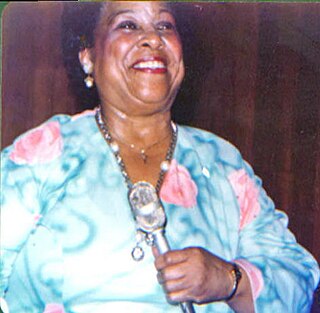
Helen Humes was an American singer. She was a blues, R&B and classic popular singer.

Holly Near is an American singer-songwriter, actress, teacher, and activist.

Ruth Alice "Ronnie" Gilbert, was an American folk singer, songwriter, actress and political activist. She was one of the original members of the music quartet the Weavers, as a contralto with Pete Seeger, Lee Hays, and Fred Hellerman.

Debra Paget is an American retired actress and entertainer. She is perhaps best known for her performances in Cecil B. DeMille's epic The Ten Commandments (1956) and in Elvis Presley's film debut, Love Me Tender (1956), as well as for the risqué snake dance scene in The Indian Tomb (1959).

Loletha Elayne Falana or Loletha Elaine Falana, better known by her stage name Lola Falana, is an American singer, dancer, and actress. She was nominated for the Tony Award for Best Actress in a Musical in 1975 for her performance as Edna Mae Sheridan in Doctor Jazz.
Jocelyn Lorette Brown, sometimes credited as Jocelyn Shaw, is an American R&B and dance singer. Although she has only one Billboard Hot 100 chart entry solely in her name, she has an extensive background in the music industry and is well known in the world of dance music. Brown sang on 23 hit singles from the Official UK Singles Chart, 8 of which have reached the top 20.
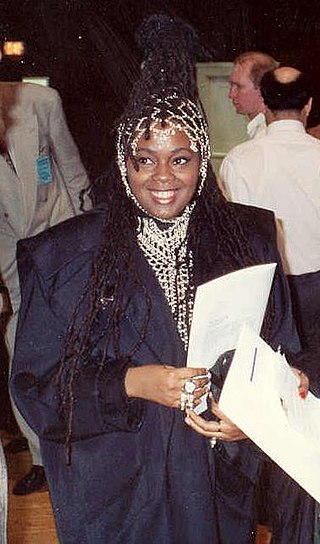
Caron Melina Wheeler is an English singer, songwriter, record producer and musician. Born and raised in London, she performed in various singing competitions as a teenager and began her recording career as one of the founding members of Brown Sugar. She was also one of the founding members of the female backing vocalist group Afrodiziak. She officially rose to fame in the late 1980s as the lead singer of R&B group Soul II Soul. Managed by her bandmate, Jazzie B, the group became one of London's best-selling groups in the 1990s. Their debut album, Club Classics Vol. One (1989), which established them as a global success worldwide, earned two Grammy Awards and featured the UK and Billboard number-one singles "Keep on Movin'" and "Back to Life ".

Julia Frances Newbern-Langford was an American singer and actress who was popular during the Golden Age of Radio and made film and television appearances for over two decades.
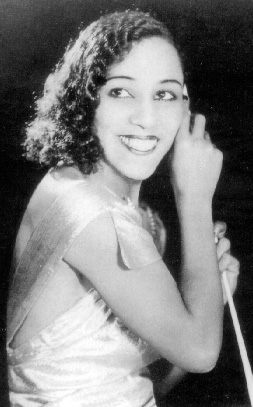
Blanche Dorothea Jones Calloway was an American jazz singer, composer, and bandleader. She was the older sister of Cab Calloway and was a successful singer before her brother. With a music career that spanned over fifty years, Calloway was the first woman to lead an all-male orchestra and performed alongside musicians such as Cozy Cole, Chick Webb, and her brother. Her performing style was described as flamboyant and a major influence on her brother's performance style.

"I Wanna Be Where You Are" is a song written by Arthur "T-Boy" Ross and Leon Ware for Michael Jackson, who took the song to number 7 in Cash Box and number 16 on the Billboard Hot 100 pop chart. It also reached number 2 on the Billboard R&B singles chart in 1972.

Jean McClain, better known as Pepper Mashay, is an American soul, house and dance music singer-songwriter who has had success as a touring and studio performer.
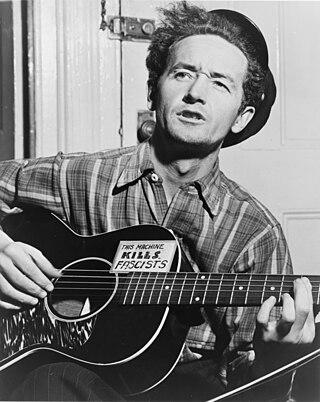
The American folk music revival began during the 1940s and peaked in popularity in the mid-1960s. Its roots went earlier, and performers like Josh White, Burl Ives, Woody Guthrie, Lead Belly, Big Bill Broonzy, Richard Dyer-Bennet, Oscar Brand, Jean Ritchie, John Jacob Niles, Susan Reed, Paul Robeson, Bessie Smith, Ma Rainey and Cisco Houston had enjoyed a limited general popularity in the 1930s and 1940s. The revival brought forward styles of American folk music that had in earlier times contributed to the development of country and western, blues, jazz, and rock and roll music.

Mark Daniel Sanders is an American country music songwriter. He has written 15 No. 1 hits, 50 singles, and over 200 cuts, including the famous Lee Ann Womack single "I Hope You Dance", co-written with Tia Sillers.

Lyons and Yosco were an American comedy duo, consisting of Italian American musicians George Lyons and Bob Yosco. They were defined by the Ottawa Evening Journal "the finest pair of Italian street musicians playing in the Vaudeville ranks." They toured the United States from 1909 into 1923, doing a musical and comedy act. The News Journal described their performance, saying they were "the best vocalists and instrumentalists of the street variety on the stage, proved intensely interesting, while their droll comedy kept the audience laughing much of the time."
Mae Barnes was an American jazz singer, dancer and comic entertainer. She was responsible for introducing the Charleston dance to Broadway in the 1924 revue Runnin' Wild. After her career as a dancer ended, she became a successful nightclub singer and recording artist.
References
- ↑ Grossman, Victor and Mark Solomon (2003) Crossing the River: A Memoir of the American Left, the Cold War, and Life in East Germany, University of Massachusetts Press
- ↑ Dunaway, David King (1997) Songs for Political Action: Folkmusic, Topical Songs, and the American Left 1926–1953 by Ronald Cohen, Dave Samuelson and Richard Weize, The Journal of American Folklore, Vol. 110, No. 438, Autumn, 1997, pp. 418-23
- ↑ Campagna, Darryl (22 June 1991). "Singer Returns to Meriden After Hope-filled Career". Record-Journal. Retrieved 29 December 2021.
- ↑ Francis, Bob (1950) Dance Me a Song, Billboard, January 28, 1950 (p. 47)
- ↑ "Singer's story comes to light at last". presstelegram.com. Retrieved 2018-06-13.